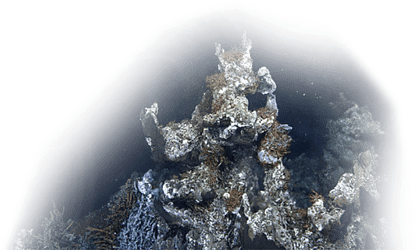The salt marshes, mud flats and eel grass meadows of temperate river estuaries are more effective than young coastal forests at capturing and storing carbon dioxide and may sequester this greenhouse gas for centuries, if not millennia, according to researchers from the University of Victoria (UVic).
The amount of carbon sequestered by the Cowichan estuary salt marshes on Vancouver Island is roughly double that of an actively growing 20-year-old Pacific Northwest forest of the same area, reports [a study](https://www.frontiersin.org/articles/10.3389/fmars.2022.857586/full#B28) published in the journal *Frontiers in Marine Science*. The research was supported by UVic, Ocean Networks Canada, and the Cowichan Estuary Restoration and Conservation Association.
So-called blue carbon – carbon dioxide (CO2) captured from the atmosphere by marine plants and algae – collects as organic debris in estuary sediments where low-oxygen conditions prevent their decomposition.
“Oxygen is depleted very quickly from the surface of the sediment due to aerobic microbial processes. This prevents buried organic matter from being remineralized back into CO2, preventing it from returning to the atmosphere,” said lead author Tristan Douglas, a UVic graduate student in the School of Earth and Ocean Sciences, who spent two years analyzing the physical and chemical properties of sediment cores collected from the Cowichan Estuary.
That makes undisturbed estuaries a potent passive carbon storage system with the global potential to capture and store greenhouse gas (GHG) emissions at the gigatonne scale. Intertidal ecosystems – especially those in the tropics – can be 20 to 60 times more effective than forests at capturing and storing carbon dioxide. However, compromised estuaries can and do release carbon on a similar scale, the authors warn.
Plant species like salt marsh grasses and sedges, mangrove forests and seagrasses are particularly efficient natural carbon sinks. They capture and store up to 70 per cent of the organic carbon resident in marine systems, despite only occupying 0.2 per cent of the ocean surface.
The report shows that the carbon sink capacity of the 466-hectare Cowichan-Koksilah Estuary has been compromised by industrial and agricultural activity since the area was settled by European colonists. Eel grass on about 129 hectares of the intertidal zone has been disturbed by log handling and storage, while about 100 hectares of salt marsh was drained for farming and cattle pasture. This has reduced its natural capacity to sequester carbon by about 30 per cent, equivalent to putting 53 typical gasoline-powered motor vehicles back on the road.
Alerts
SHOWING 2 RESULTS
Showing matches for "Kim Juniper"
Estuaries have vast potential for ‘blue carbon’ sequestration, study finds
Overview
Changing STEM TO STEAM: ONC farewells Kim Juniper
Overview
It was fitting, in a way, that one of the world’s leading oceanographers, Kim Juniper, passed away on 7 June 2024 during Ocean Week Canada: a time in our annual calendar when we raise awareness about the importance of connecting to and protecting the ocean.
Dr. S. Kim Juniper was Ocean Network Canada’s Chief Scientist, and a driving force behind the transformation of ocean science that ONC will continue to advance on the world stage that he helped us join.
His titles were many: Professor in the School of Earth and Ocean Sciences and the Department of Biology at the University of Victoria, holder of the British Columbia Leadership Chair in Ocean Ecosystems and Global Change since 2006, and expert consultant to the International Seabed Authority. In his role as ONC Chief Scientist, he co-developed a bold [Strategic Plan](https://cdn.onc-prod.intergalactic.space/ONC_Strategic_Plan_2030_f67762f3c1.pdf) that will serve the organization through the entire UN Decade of Ocean Science for Sustainable Development (2021-2030).
Juniper was one of the leading contributors to the original design of the NEPTUNE underwater cabled observatory, and helped build an expert science team that is advancing ocean observing through research partnerships within Canada and around the world. Under his leadership, scientific monitoring has expanded in step with the expansion of ONC’s observatories on the Pacific, Atlantic, and Arctic coasts of Canada. Most recently he was instrumental in establishing the linkages with our Spanish partners that led to the January 2024 launch of ONC’s Antarctic Ocean observatory.
Stay up to date with ONC
Subscribe

Ocean-Climate Building University of Victoria
#100, 2474 Arbutus Road, Victoria, BC, Canada, V8N 1V8
info@oceannetworks.ca+1 (250) 472-5400Marine Technology Centre University of Victoria
#106, 9865 West Saanich Road, North Saanich, BC, Canada, V8L 5Y8
info@oceannetworks.ca+1 (250) 472-5400@ 2025 Ocean Networks Canada. All rights reserved.